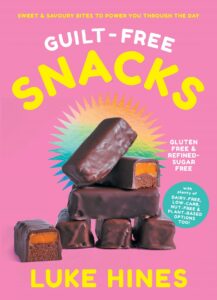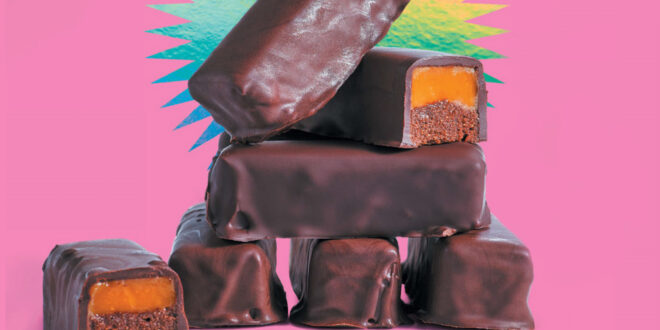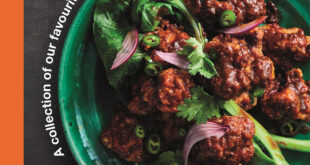
Article courtesy of Guilt-Free Snacks by Luke Hines, Published by Plum, RRP $26.99, Photography by Rob Palmer and Mark Roper
Not all snacks are created equal, and I think that’s why, for so long, snacking got such a bad rap. Traditionally, snacking meant something from a packet that was highly processed and refined, and most likely laden with sugars, seed oils and fillers I can’t even pronounce. So, knowing how to snack smart can make a huge difference to your health and wellness journey. And here’s how.
FAIL TO PREPARE OR PREPARE TO FAIL
I love this saying. When it comes to snacking, it basically means that if you don’t spend some quality time preparing healthy snacks in advance, you are likely to get caught out and have no other choice but to reach for a less-than- ideal convenience snack with who knows what in it. So, prepare ahead and give yourself time to choose your snack recipes for the week. Get to the shops to load up on the ingredients you need, then make your creations so you have snacks on hand for when those cravings kick in.
BULK BATCH MAKE AND BAKE
Once you’ve made time for what you want to make, I recommend preparing one or multiple snacks in bulk. Enjoy some on the day, then store some in the fridge and some in the freezer for the days, weeks or months ahead. You can never have too many pre-made snacks on hand for when you’re short on time but big on hunger.
WHAT FOR WHEN
Knowing what you want to snack on and for when is important. A pre- workout snack will be different to what you want post-workout, much like how an on the way to work morning snack will be different to a pre-bed midnight snack. Know what you need energy-wise and choose recipes based on that requirement so you’re satisfying the craving and energy needs for each occasion.
MAYBE YOU’RE JUST THIRSTY
Dehydration often presents itself as hunger, so make sure you stay adequately hydrated throughout the day. Aim for a minimum of 2 litres of fluid per day, but don’t forget to take into account the need for extra to counterbalance diuretic drinks such as coffee, or water lost from exercise and sweating.
KNOW WHAT CONSTITUTES A GOOD SNACK
The best type of snack is one that you make from scratch. Realistically, however, we can’t always have it that way. Lean towards snacks that are gluten free, refined-sugar free, lower carb and high in healthy fats, made from unrefined, unprocessed ingredients from high-welfare animals and local, organic produce, if possible. Knowing where our food was grown, caught, raised and produced and how it was transported enables us to make better choices for the sake of our own health and that of the planet.
KNOW YOUR LABELS
You won’t always be in a position to have my snacktastic creations on hand, and knowing what to look for on labels can be a massive help for when you’re on the go. When choosing any pre-made or store-bought snacks, my rule of thumb is: less than 5 grams of sugar per serve, free from any artificial ingredients, no refined seed oils (such as canola or sunflower), gluten and refined-sugar free. Look for a decent hit of fibre, well-sourced protein, slower burning carbs and quality healthy fats.
SAY NO
Understanding when to say no to snacks is equally as important as knowing when to snack. Sometimes we snack out of pure boredom, for emotional reasons, or simply because we are offered one. Learn to say no to mindless snacking without any purpose. If you’re not genuinely hungry, don’t know what’s in it, or are simply having it for the sake of it, that’s when snacking isn’t ideal. Say no.
FIND THAT BALANCE
If in doubt, find a balance between the three core snack ingredients: well-sourced protein from plants or animals, good-quality healthy fats and unrefined carbs from whole foods. Protein helps keep you feeling fuller for longer and repairs and rebuilds muscles. Healthy fats can balance hormones, keep our energy levels stable and improve our mood, and well-sourced smart carbs can provide superior sources of energy for overall performance, repair and function. Look for snacks that celebrate these three, or slide the scale accordingly. Reduce the carbs if you need a lower carb option, increase the protein post-workout, or up the fats to aid in fasting. Find your balance.










Join the Discussion
Type out your comment here:
You must be logged in to post a comment.